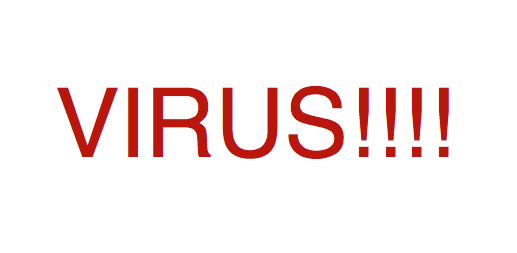A computer virus is a computer program that can copy itself and infect a computer without permission or knowledge of the user. The original may modify the copies or the copies may modify themselves, as occurs in a metamorphic virus. A virus can only spread from one computer to another when its host is taken to the uninfected computer, for instance by a user sending it over a network or carrying it on a removable medium such as a floppy disk, CD, or USB drive. Additionally, viruses can spread to other computers by infecting files on a network file system or a file system that is accessed by another computer. Viruses are sometimes confused with computer worms and Trojan horses. A worm, however, can spread itself to other computers without needing to be transferred as part of a host. A Trojan horse is a file that appears harmless until executed. In contrast to viruses, Trojan horses do not insert their code into other computer files. Many personal computers are now connected to the Internet and to local-area networks, facilitating their spread. Today’s viruses may also take advantage of network services such as the World Wide Web, e-mail, and file sharing systems to spread, blurring the line between viruses and worms. Furthermore, some sources use an alternative terminology in which a virus is any form of self-replicating malware.
The term comes from the term virus in biology. A computer virus reproduces by making (possibly modified) copies of itself in the computer’s memory, storage, or over a network. This is similar to the way a biological virus works.
Some viruses are programmed to damage the computer by damaging programs, deleting files, or reformatting the hard disk. Others are not designed to do any damage, but simply replicate themselves and perhaps make their presence known by presenting text, video, or audio messages. Even these benign viruses can create problems for the computer user. They typically take up computer memory used by legitimate programs. As a result, they often cause erratic behavior and can result in system crashes. In addition, many viruses are bug-ridden, and these bugs may lead to system crashes and data loss.
Anti-virus software and other preventive countermeasures
There are two common methods that an anti-virus software application uses to detect viruses. The first, and by far the most common method of virus detection is using a list of virus signature definitions. The disadvantage of this detection method is that you guys are only protected from viruses that pre-date their last virus definition update. The second method is to use a heuristic algorithm to find viruses based on common behaviors. This method has the ability to detect viruses that anti-virus security firms’ have yet to create a signature for.
Some of you install anti-virus software that can detect and eliminate known viruses after the computer downloads or runs the executable. They work by examining the content heuristics of the computer’s memory (its RAM, and boot sectors) and the files stored on fixed or removable drives (hard drives, floppy drives), and comparing those files against a database of known virus “signatures”. Some anti-virus programs are able to scan opened files in addition to sent and received emails ‘on the fly’ in a similar manner. This practice is known as “on-access scanning.” Anti-virus software does not change the underlying capability of host software to transmit viruses. You must update your software regularly to patch security holes. Anti-virus software also needs to be regularly updated in order to gain knowledge about the latest threats.
One may also prevent the damage done by viruses by making regular backups of data (and the Operating Systems) on different media, that are either kept unconnected to the system (most of the time), read-only or not accessible for other reasons, such as using different file systems. This way, if data is lost through a virus, one can start again using the backup (which should preferably be recent). If a backup session on optical media like CD and DVD is closed, it becomes read-only and can no longer be affected by a virus. Likewise, an Operating System on a bootable can be used to start the computer if the installed Operating Systems become unusable. Another method is to use different Operating Systems on different file systems. A virus is not likely to affect both. Data backups can also be put on different file systems. For example, Linux requires specific software to write to NTFS partitions, so if one does not install such software and uses a separate installation of MS Windows to make the backups on an NTFS partition (and preferably only for that reason), the backup should remain safe from any Linux viruses. Likewise, MS Windows can not read file systems like ext3, so if one normally uses MS Windows, the backups can be made on an ext3 partition using a Linux installation.

